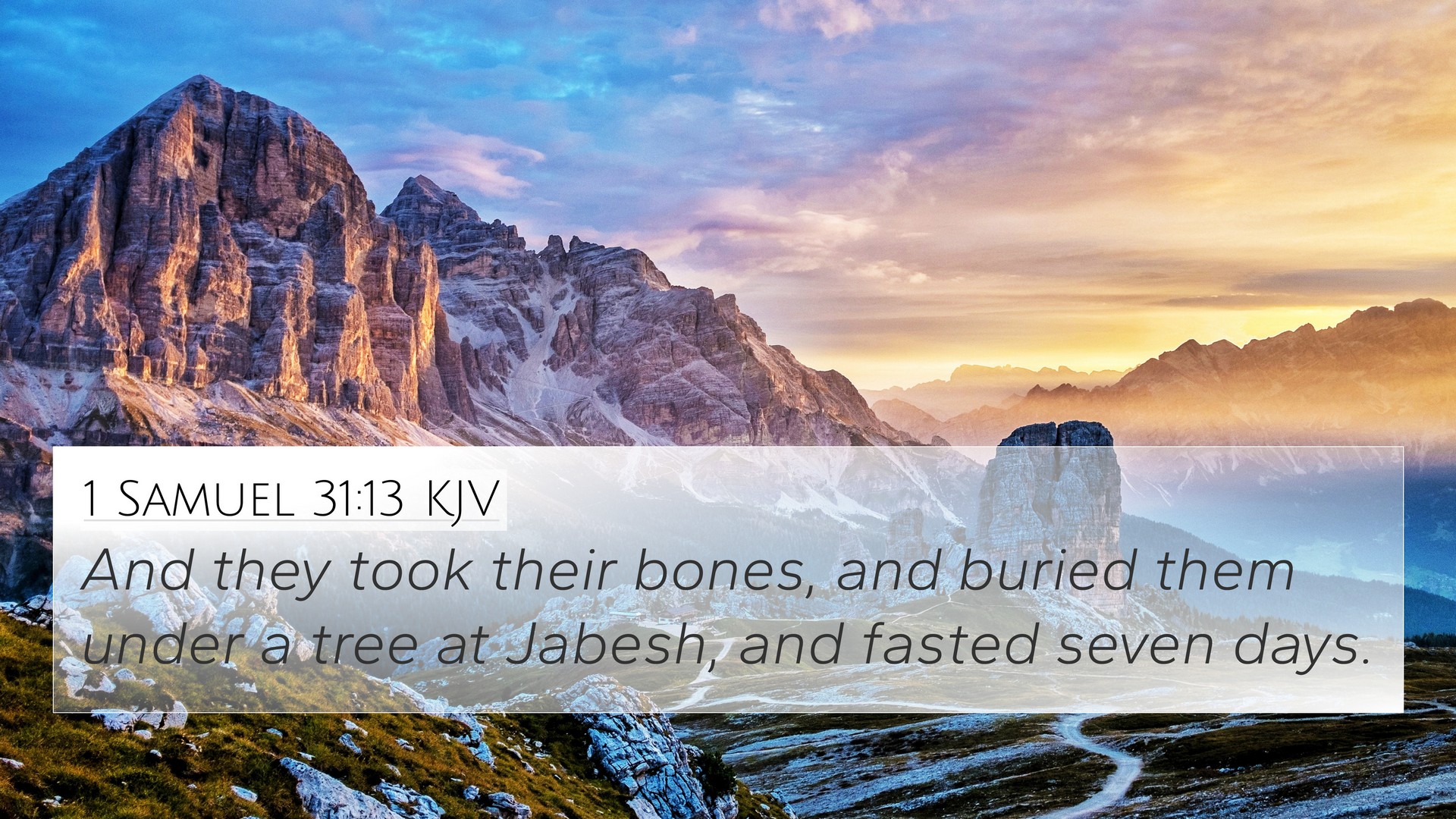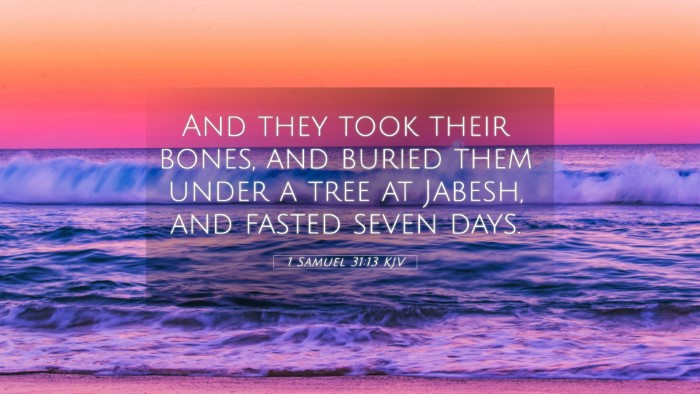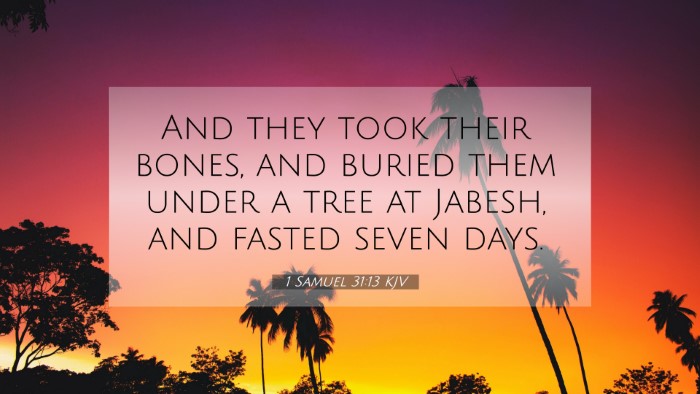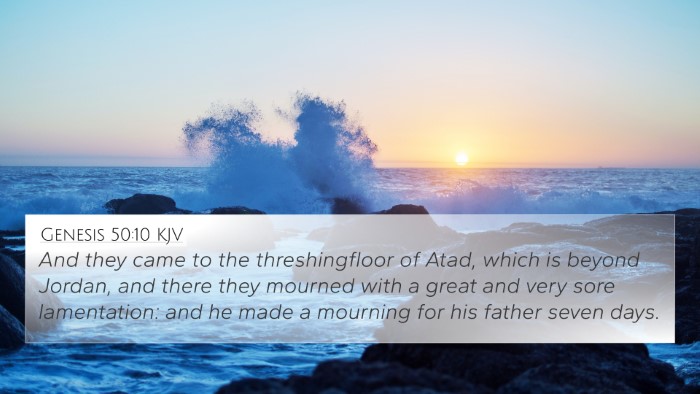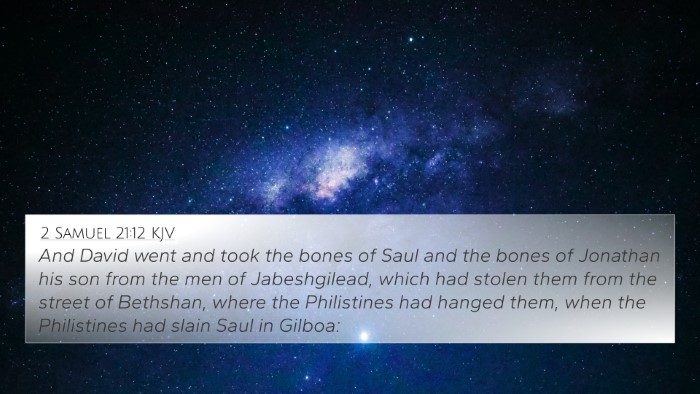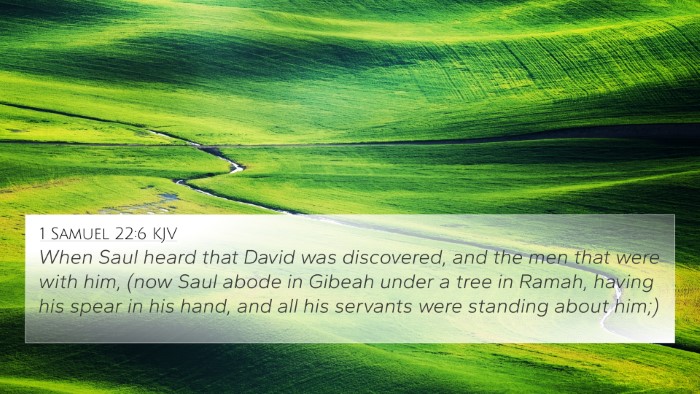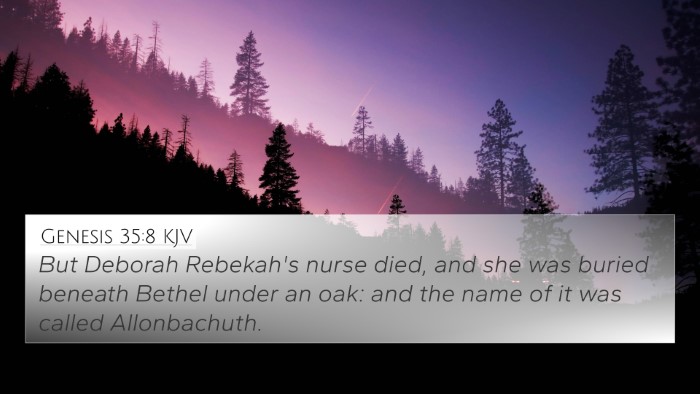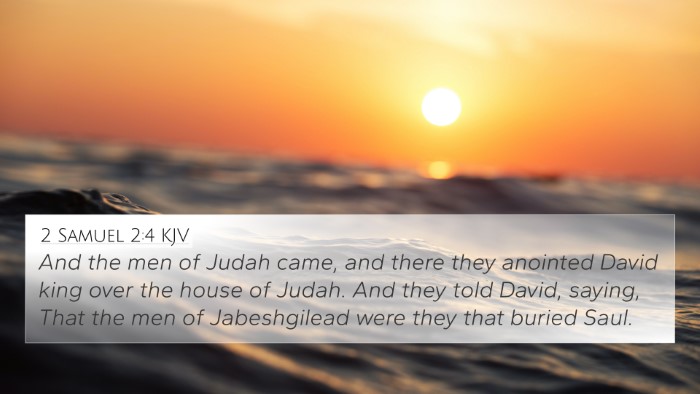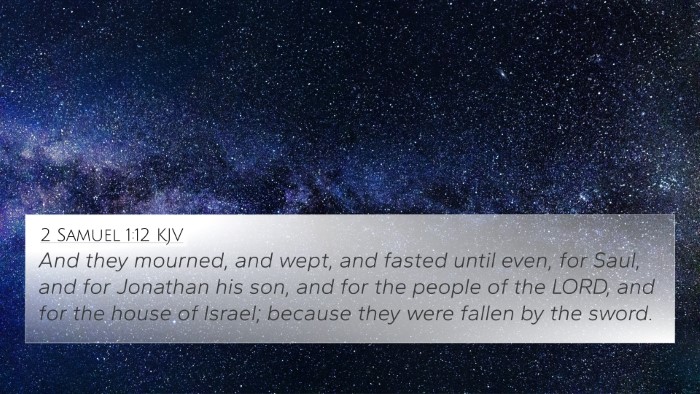Understanding 1 Samuel 31:13
Verse: "And they took their bones, and buried them under a tree at Jabesh, and fasted seven days."
Summary and Context: This verse concludes the narrative of Saul and his sons' death, highlighting the respect paid to their remains and the deep grief of the Israelite people. It reflects on themes of honor, mourning, and the close-knit nature of community in ancient Israel.
Commentary Insights
1 Samuel 31:13 has been interpreted through various public domain commentaries, shedding light on its deeper meanings:
-
Matthew Henry:
Henry emphasizes the dignity of burial and the respect for the dead, explaining that even those who faced tragic ends deserve honor. He notes that the act of fasting signifies deep sorrow and mourning in Israel, denoting collective grief over Saul's actions and the consequences for the nation.
-
Albert Barnes:
Barnes focuses on the significance of Jabesh as a place of honor for burial, contrasting the treatment of the dead. He reflects on the political and social dynamics at play, suggesting that this act was also a form of reclaiming dignity for Saul and his sons in light of their inglorious deaths.
-
Adam Clarke:
Clarke comments on the practice of fasting for seven days, which was customary during mourning periods in Israel. He discusses the implications of Saul's leadership and its impact on the Israelites, elaborating on the community’s need to mourn not just the individuals, but the lost hope for the kingdom.
Cross-References
This verse connects with several key scriptures that further explore similar themes of mourning, leadership, and honor in the grave:
- Deuteronomy 21:22-23: Discusses the treatment of the body after execution, underlining the importance of burial.
- 1 Chronicles 10:12: Details the recovery of Saul’s body and the mourning process, demonstrating communal respect.
- Esther 4:3: Illustrates collective mourning in the Jewish community, highlighting cultural practices surrounding grief.
- Job 30:24-25: Job laments the feeling of abandonment in his suffering, paralleling the communal loss felt by Israel.
- Psalms 79:1-3: A psalm of lament that relates to the dishonor brought upon God and the people, contrasting Saul's death with an appeal for divine justice and respect.
- Matthew 5:4: Jesus’ beatitude on mourning reflects the truthful grief experienced at loss, retaining the compassion for those grieving.
- Romans 12:15: Paul’s instruction to rejoice and weep together signifies the communal support amidst individual tragedy.
Thematic Connections
1 Samuel 31:13 is central to understanding the theme of respect for the dead, which threads through both the Old and New Testaments:
-
Mourning:
This verse portrays a biblical model for grief, emphasizing the value of shared mourning within a community. The act of fasting illustrates how deeply intertwined is the loss of a leader with the identity of a nation.
-
Leadership and Legacy:
Saul’s story serves as a cautionary tale about the responsibilities of leadership and the consequences that follow failure. His death represents a significant pivot in Israel's history that will lead to the rise of David.
-
Community Response:
The decision to bury Saul and his sons reflects a broader communal ethic in Israelite society, where individual actions impact the collective and evoke communal responsibilities towards the deceased.
-
Honor in Burial:
Honor provided through a proper burial is a recurring biblical theme, emphasizing that even the most flawed leaders deserve dignity in death, complemented by spiritual reflections and societal implications.
Conclusion
1 Samuel 31:13 invites readers to explore deep cultural significances surrounding death, mourning, and honor. The insights gleaned from various commentaries illuminate the spiritual and ethical dynamics at play while providing context to the contemporary reader.
By understanding the cross-references and connecting themes, one can appreciate the intricate relationships formed in the Biblical narrative, enhancing our reflection on both personal and communal aspects of mourning and remembrance.
